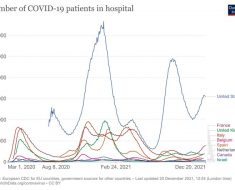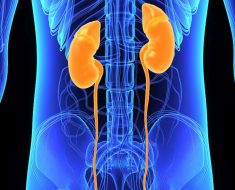 Reviewed
ReviewedScientists achieve breakthrough in treating 'neglected' polymyalgia rheumatica
 Reviewed
ReviewedScientists have found success in treating a 'neglected' inflammatory condition, polymyalgia rheumatica, with a drug that could provide an alternative to steroids for patients.
The study, carried out by Anglia Ruskin University (ARU) and published in the New England Journal of Medicine, describes a successful trial of sarilumab. The drug, which in the UK is approved to treat rheumatoid arthritis, blocked the protein interleukin-6, which can cause inflammation.
Polymyalgia rheumatica (PMR) is characterized by pain and morning stiffness in the shoulder and hips and affects people over the age of 50. It can significantly affect quality of life, and currently is mainly treated with the steroid, glucocorticoids.
Although glucocorticoids can control the condition, more than half of PMR patients suffer relapse of their condition when reducing their steroid medication. Interleukin-6 has been implicated in the pathophysiology of PMR because circulating elevated levels and increased tissue expression of interleukin-6 have been found in PMR patients.
The year-long clinical trial carried out by researchers saw 118 patients either receive injections of sarilumab twice a month, or a placebo. The sarilumab group received a 14-week tapering dose of glucocorticoid in conjunction with twice-monthly injections of sarilumab, while the placebo group received glucocorticoid at a tapering dose for 52 weeks.
The primary outcome at the end of the trial was sustained remission of the condition. This occurred in 28% of people taking the sarilumab, compared to 10% of people taking the placebo. After entering remission after 12 weeks, there were more flare ups of the condition in the placebo group (57%) compared to those receiving sarilumab (24%).
Lead PMR expert and senior author of the study, Professor Bhaskar Dasgupta, from the Medical Technology Research Centre at Anglia Ruskin University (ARU), said: "Polymyalgia rheumatica is a poorly managed and neglected condition for which current treatment is unsatisfactory and can have long-term side effects. Patients can have relapses while tapering their medication, and these relapses currently have very limited treatment options.
"Our findings show promise that sarilumab could be used to treat PMR and improve outcomes for people tapering their steroid medication.
"This is an exciting development that has potential to improve treatment options in a condition that is common among older people. PMR is the most common reason for long-term steroid prescriptions. Any effective medication that can spare the use of steroids should have great impact on reducing the serious side effects of such steroids which can include diabetes, osteoporotic fractures and infections."
The research was funded by Sanofi and Regeneron Pharmaceuticals.
Earlier this year, a review paper published in the journal Nature Reviews by Professor Dasgupta and colleagues highlighted the emerging view that relapsing PMR patients also have underlying Giant Cell Arteritis, where the main blood vessel aorta and its branches become inflamed. Researchers suggested the two should be treated as linked conditions under the term GCA-PMR Spectrum disease (GPSD).
Anglia Ruskin University
Tomelleri, A., et al. (2023). Disease stratification in GCA and PMR: state of the art and future perspectives. Nature Reviews Rheumatology. doi.org/10.1038/s41584-023-00976-8.
Posted in: Medical Research News | Medical Condition News | Pharmaceutical News
Tags: Aorta, Arteritis, Arthritis, Blood, Blood Vessel, Cell, Clinical Trial, Diabetes, Drugs, Giant Cell Arteritis, Glucocorticoid, Inflammation, Interleukin, Interleukin-6, Medicine, Pain, Pathophysiology, Pharmaceuticals, Placebo, Polymyalgia Rheumatica, Protein, Research, Rheumatoid Arthritis, Steroid, Technology





